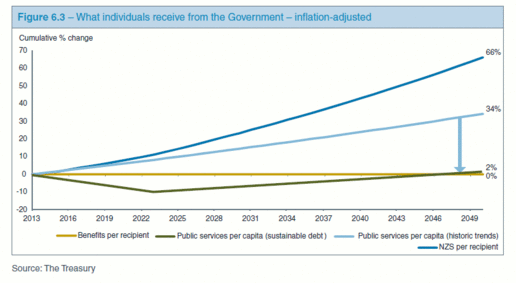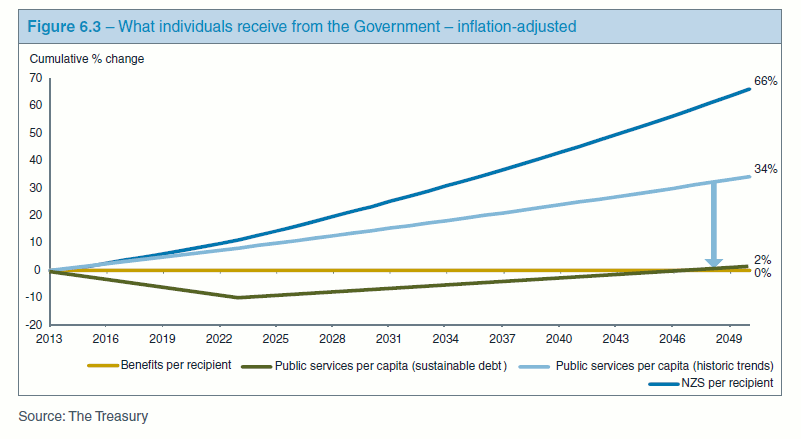It's been a year of quiet catastrophes, greeted with vacant smiles.
Just a month ago in the Long-term Fiscal Statement, Treasury painted a business-as-usual scenario, where New Zealand continued on its previous course and indentured the next generation into backbreaking, unsustainable debt – 223% of GDP by 2050.
The half-year update released this week shows we're still going to run deficits for a while, but we'll get debt back down and maintain it at the long-term target of 20% of GDP by 2024.
The two are completely different scenarios, of course. The Long-term Fiscal Statement scenario is a hypothetical one which excludes the massive cut made in the 2009 Budget. It is this cut that made our debt problem disappear, it is this cut that shapes our long-term fiscal position, and it is the consequences of this cut that we will struggle to live with, and struggle for the foreseeable future.
It looks dry on the books: $650m off the new operating expenditure allowance from 2010/11 onwards. But with the release of the Long-term Fiscal Statement, we have a clearer picture of what it actually means:
Spending on public services per person real terms will be reduced each and every year for the next fourteen years. It will not return to present levels for almost forty years.
Over the same period, superannuation per person will grow by 66%. That's not an effect of the aging population. The population will age, and the number of people getting superannuation will grow massively, *and* each one of them will receive 66% more in inflation-adjusted terms.
And even as spending on public services stagnates over those four decades, more and more of it will be spent on services for the aging population. This means that spending on schools, police and other services will be hit with a double-whammy.
Babyboomer will take a bite from both ends: They will draw down an increasing amount in superannuation. They will eat up an increasing share of a stagnant pie.
And why is the pie stagnant in the first place? Because they demanded for four years that the Labour Government give up its “excessive” surpluses, and it caved with more Working for Families and massive tax cuts. And then they voted in a good-times National Government which gave them another set of tax cuts, and promised not to cut their future incomes or their present benefits.
This is not the worst possible scenario. It would be worse if National continued spending and left nothing but debt behind. That'd be worse. If we carried all the costs now and made deep cuts to services or steep hikes in taxes, that might be fairer, but it would be more painful. And perhaps the stance on superannuation will change at the next election. I hope it does – any party that fails to support a change to superannuation entitlement will be downright irresponsible.
Given how far we've wandered down this path, National's choice at the Budget might be reasonable. But the point is, this is the year it's finally bubbled up to the surface. It's time we wake up and smell the shitty coffee – we're in for a decade and a half of public sector decline.
Perhaps National can cut enough fat off the civil service to find enough money to get through next year without reducing services. But once they cut all the fat, are they going to cut all the fat again? And again? For fourteen years? “Do more with less” might work the first time, but it won't be long before it just turns into punchline.
It's downright farcical to talk about us going into surplus, as if it was just a function of economic forecasting. Like some Treasury boffin tweaked some numbers and poof - billions of dollars materialised.
All these numbers are just chalk outlines showing how deep the cuts will need to go. The knife will come next year, and the year after that, and the year after that...

